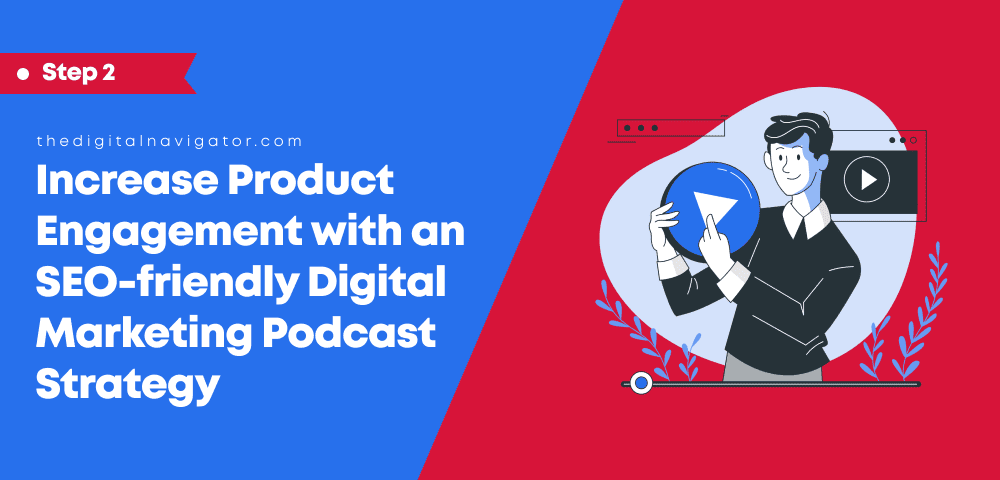Improve Content Quality | Demystifying SEO
Published Date: |
Updated Date:
Want to know why keywords are so important? There’s a right way to use them to authentically improve the content you create. Here are two keyword tips we recommend to improve content quality with great content SEO practices.
This post is part 2 of 3 in our 3 Step Guide to Demystifying SEO
The key to SEO is to provide authentic, relevant, and expert content that responds to the queries your customers may have about your products. These are not just measures that your clients will consider when choosing to buy, but also how search engines rank your results.
But how can you make sure that your content focuses on quality and not just sales? What is SEO content, anyway?
In our experience, there are a few simple tips you can use to revamp existing content to make it more engaging, or create new content that tops search result pages without having to opt into pay-per-click advertising.
First, we suggest targeting user problems with useful, actionable content that provides direct solutions to these problems.
While the length of your content and a clickable table of contents will also go a long way to improving content quality, next we recommend you use those all-important keywords in a logical way–usually in the headings of your article subsections and the paragraphs that follow.
To be sure, the way you use these keywords for landing page content vs. article or blog content will vary. Just know that there are tools out there to help you avoid keyword stuffing to get really incredible content your readers want to share.
Prefer not to read? Watch along at the video below as our top expert at The Digital Navigator walks you through the three steps to SEO!
The Importance of Content in SEO | A Guide to SEO-driven Content
Good quality content provides an optimal experience for the person reading it. It doesn’t dumb down difficult ideas, and opts to provide added value for all kinds of readers seeking a solution to a specific problem.
The goal with good quality content is leads generation and an improved click-through rate as opposed to sales. An article that seems too salesy will reduce trust in what you are saying: people will read and be wondering, what’s the catch.
| What is Click-Through Rate?
In the context of SEO this means the percentage of users that have seen your content/website in a search engine that have clicked on your page. For example, if your page is displayed 1,000 times on Google it has 1,000 impressions. If you have 10 people click, then the click-through rate is 1% (10 / 1000) |
To help, here are two sure-fire ways to make sure you are creating non-salesy, quality content for your business:
Target User Problems with Useful Content
The first mistake business owners often make during the content creation process is to ask: how can I get this piece of content to rank? or how can this content fulfill my sales agenda?
In short, they forget why content is important for SEO!
Our advice? Turn this whole idea upside down. Content creators and marketers must think like the person who will eventually read the content. They must ask what they’re looking for and what problems they need solutions to.
For example, one of our clients does pest control services out of Texas.
While it was tempting to say, publish a guide that simply explored what to look for in a pest control service, we recognized that clients would more likely type questions like, do I have rats or mice in my house, or DIY rat infestation solutions.
As prospects enter that information into a search engine, they’re looking for very specific information. In response, we created and published content which catered to DIY inspections for rats or other rodents and listed all the steps to achieve results in the free content.
Full transparency is key here: you don’t want to hide value behind a paywall. You want to use your content to advise or provide tangible solutions without guilting readers into purchasing a product you offer.
The idea with quality content is that those who choose to engage further with your content will be valuable leads. If they don’t pursue further engagement, the lead would likely not have been worth your time, or result in a quality connection.
We should mention of course that even with a DIY guide like this one, a lot of business owners may find they do not want to commit the time, have doubts about the process, or realize they have a bigger problem on their hands than they realized.
If that sounds like you, you might want to engage a professional to take the load off your shoulders.
How Long Should My Content Be?
A major concern for business owners who are set on ranking high in search engines is word count. A few years ago it was a minimum of 300 words, where now 500 to 800 words is the optimal length to get Google’s attention, for example.
That said, we recommend you start off creating SEO driven content at about 1500 words to hit all the targets. The reason is because you will need a sufficient amount of space to provide the value you want to share–you can’t get the same value transition in just 300 – 400 words.
The idea here is closely related to quality: you want to make sure you’re not skipping steps or missing out on the big picture of why visitors came to your page in the first place. You want to provide a complete and comprehensive source of information so prospects don’t bounce.
The Digital Navigator Tip: If you have the stamina, we recommend creating a long-form article at about 4000 words. We call this type of content a pillar post, and often these types of posts make it really easy to rank under a certain subject or theme.
To help ensure these are engaging and shareable without seeming overwhelming, we recommend being strategic with how you break up and post these types of articles–take for example the article you are reading!
Then, once you’ve ranked well with that post, you’ll be more motivated to write more content that extends parts of this article, or which focuses on smaller, more shareable segments of the article for social media.
Looking back on the pest control company out of Texas, we were able to take top rankings with a 4000 word post, even competing against companies with multi-million dollars in revenue.
Why is unique content so important to SEO?
Because unique articles have the most comprehensive source of valuable, relevant information. Plus we managed to provide a few companion guides at about 1500 words to the original articles, which helped boost click-through rates to the main article in the long run!
Utilize Table of Contents to Your Advantage
Some people fear writing content that is too long, since readers may see the length and then bounce–worried they won’t find the information they’re looking for quickly enough.
The trick is to prevent these bounce reactions by adding headers and line breaks that readers can then easily navigate using an accessible table of contents (ToC).
Making it simple for readers to jump to different sections based on the topic they want more information about will not only make it more likely for them to read more of the article or click through to your product pages, but also enables you to add more content to that original article.
For example we were able to take the 4000 word pest control article, and through good use of navigation tools and a great-looking ToC, we managed to add another 5000 words to the guide without seeing a major loss in readers or overall engagement.
Hint: Create headers that are inline with the questions information seekers would type into the search query box, and format them in H1, H2, and H3 formats. Then create a ToC using these headers that allows readers to skip to the part of the article they want to read.
Use SEO Keywords to Guide Content Headers
Now that you’ve taken the time to add real quality content that answers the questions your prospects may have in your industry, it’s safe to move into the keyword targeting element of your content marketing.
We discussed how to find the right keywords in Part One of this guide, and how to use keyword technologies like Ahrefs.com to your advantage.
With the addition of a Table of Contents, you should have already reorganized your content into strong headers–now the idea is to check the relevancy and strength of these headers and the keywords you’ve used to create them.
Ahrefs may cover all your bases as you measure the efficacy of your headlines, but we also recommend checking with a program called SEMrush to see which one suits your needs best.
In either case though, when checking the strength of your keywords and headers, you should be focusing on two metrics: volume and difficulty score.
Volume is the estimated number of people per month who may use the search term or keyword you want to use in your article, while difficulty score depicts the volume of searches, and which tells you how hard it is to rank for that specific search term.
When you’re choosing what search terms (or keywords) to use in your headlines, contrast the volume of the keyword against its difficulty score: anything lower than a 10 would be very good out of 100.
Then, if you hit a volume of 200 to 500 search queries a month, and get about 10 or 20% of that audience, your potential is to average somewhere between 20 and 50 relevant visitors a month to that valuable piece of content you’ve worked on.
“The best articles or pages will rank for several search terms!”
As this process rounds back to your content, you take those keywords, and find ways to implement them into your existing content–though some prefer to do this first and write their content from these keywords.
You can even add these keyword search queries as direct headers in your article and then fill in the blanks below it to make sure the article answers multiple search intents!
Final Step: Add a Lead Magnet to Your Content
What is SEO content? It is quality, keyworded content that helps you focus on leads and conversions…i.e. SALES. Now you know why content is important for SEO!
Because visitors have arrived organically due to your keywords, and because they’re more likely to get the answer they were looking for from your comprehensive resource, we recommend you then add a lead magnet or contact form, or even a call number, as a way to convert visitors.
This is a low-key way to pull more leads into your network with the content you’ve provided, and to improve conversion rates for leads and visitors for future content you plan to create.
With a solid technical foundation and quality content at the ready, you’re now ready for the final step in your SEO journey: backlinks!
Internal linking and backlinks are yet another way that search engines rank your material, but they also improve engagement and traffic for your website–make sure to read the last step in this SEO guide to learn more.
This post is part 2 of 3 in our 3 Step Guide to Demystifying SEO. In the next post, you’ll learn how backlinks can improve the authority of your content and get you higher rankings in popular search engines. Click to read Part 1: Build a Technical Foundation if you missed it, or skip ahead to Part 3: Build Authority Through Backlinks.








0 Comments